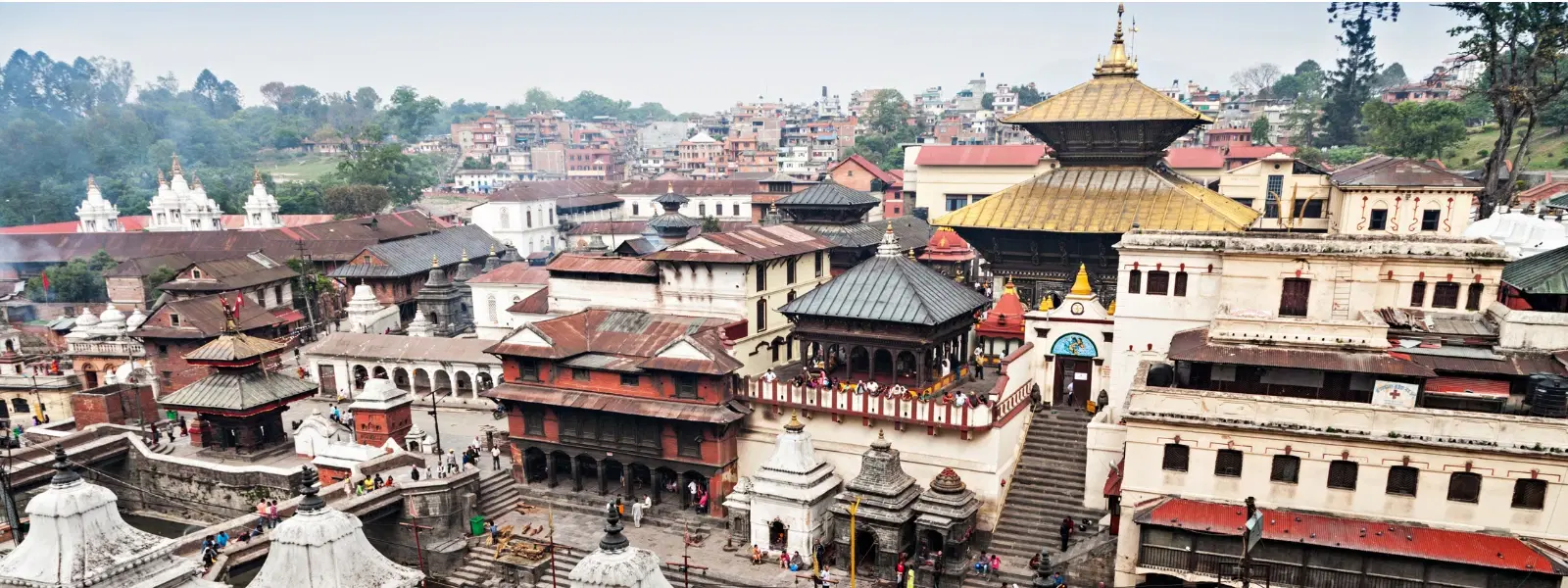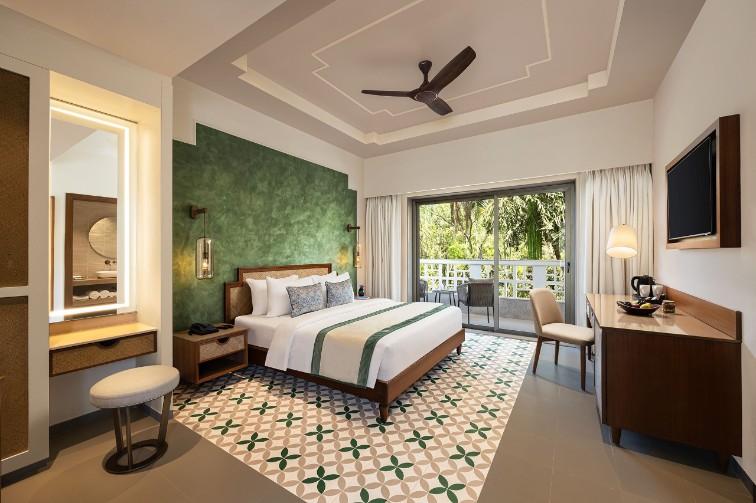
Hotels
•05 min read

Pashupatinath Temple, one of Nepal’s most sacred sites, stands as a beacon of spirituality and culture. Hailed as a UNESCO World Heritage site, it attracts travelers and devotees alike. In this post, we unveil the 10 best times to visit this awe-inspiring destination, based on festivals, weather conditions, and even crowd patterns. Along the way, you'll gain practical travel tips, insights into nearby accommodations, and ideas for additional local experiences.
The temple is a centerpiece in Hindu traditions, dedicated to Lord Shiva. From ancient rituals to daily prayers, Pashupatinath is steeped in history and cultural gravitas. The spiritual energy emanating from its incense-filled air and continuous devotional practices creates an atmosphere that is both serene and profound.
When planning your trip, several factors come into play. Weather conditions can affect the overall experience, while the occurrence of major festivals brings a unique vibrancy to the temple. Crowd sizes vary dramatically throughout the year. For those looking for a quieter, more reflective experience, timing your visit during off-peak hours could make a notable difference.
Maha Shivaratri is one of the most spiritually charged days for devotees. On this night of worship, thousands gather to celebrate the divine energy of Lord Shiva. The air is alive with chanting and devotion, creating an atmosphere that is both mystical and unforgettable.
Teej is a vibrant, women-centric festival that celebrates womanhood and devotion. Women dress in traditional attire and participate in rituals full of color and joy. This festive tempo adds a dynamic layer to the overall temple experience.
There is something magical about witnessing the first light at Pashupatinath Temple. Early mornings offer a peaceful ambiance with minimal crowds, allowing visitors to deeply connect with the temple’s solemn energy and admire the stunning architecture undisturbed.
The monsoon season brings a refreshing coolness to the temple surroundings. The rains enliven the lush flora, enhancing the natural beauty of the area. For nature enthusiasts, the wet season offers a rejuvenated view of Nepal's landscape around the temple.
Dashain, Nepal’s biggest festival, resonates with cultural significance. While primarily celebrated at home, its connection to Pashupatinath is undeniable, drawing crowds who seek to partake in the blended festivity of religious observance and ancestral reverence.
The dry and mild conditions of the winter months provide an ideal setting for exploring the temple. With less rain and clear skies, visitors can enjoy the outdoor rituals without any hindrances, making it one of the best seasons to plan a visit.

The evening Sandhya Aarati is a ritual that illuminates the temple with divine brilliance. As the sun sets, the soft glow and mesmerizing chants create a serene and enchanting environment that is not to be missed.
Spring breathes new life into the surroundings, with blooming flowers and pleasant temperatures. The refreshing air coupled with the temple’s historic aura makes spring an excellent time to visit and explore both the spiritual and natural facets of the area.
For those who prefer a quieter experience, off-peak weekdays are optimal. Visiting during the mid-week days minimizes large crowds, allowing you to fully immerse in the peaceful ambiance of the temple grounds.
Aside from the well-known festivals, there are designated puja days when the temple hosts special ceremonies and rituals. These occasions offer a deeper spiritual engagement, providing a unique opportunity for devotees and curious travelers alike to witness rare religious practices.
Pro Tip for Your Pashupatinath Visit
Did you know? The best way to experience Pashupatinath Temple’s spiritual aura is by attending the Sandhya Aarati, a mesmerizing evening ritual that blends music, devotion, and tradition. Don’t forget to arrive early to secure a good spot!
When visiting Pashupatinath Temple, it is important to dress modestly. Opt for loose-fitting clothing that covers your shoulders and knees. Additionally, always remove your shoes before entering the temple premises. Respect local customs and observe silence during prayers to maintain the sanctity of the rituals.
Pashupatinath is easily accessible from Kathmandu. Visitors arriving at Kathmandu airport can take a short taxi ride to the temple, while those in the city center have multiple transit options available. Local buses and ride-sharing services are popular and reliable methods to reach this spiritual destination.
The weather at Pashupatinath Temple varies across the seasons. While winters are generally dry and comfortable, the monsoon season brings refreshing rains that enliven the area. Checking local weather updates prior to your visit can help tailor your travel plans and ensure you are prepared for seasonal fluctuations.

If you’re planning an extended stay, numerous hotels situated in close proximity to the temple offer convenience and comfort. Many of these establishments are known for their warm hospitality and stunning views of the Kathmandu skyline.
Travelers on a budget will find several affordable lodging options near Pashupatinath Temple. Local guesthouses and smaller hotels provide clean and comfortable rooms, allowing you to experience Nepalese hospitality without breaking the bank.
For those seeking a more indulgent visit, luxury hotels and resorts are available near the temple. These properties offer top-notch amenities, refined services, and lavish accommodations that promise a memorable and opulent stay.
The area surrounding Pashupatinath Temple is rich with history and natural beauty. Key attractions include Guhyeshwari Temple, Aarya Ghat, and various scenic viewpoints that offer panoramic vistas of the ancient city. Exploring these sites can deepen your understanding of local traditions and spirituality.
Immerse yourself in a cultural experience by visiting the religious market near the temple. Here, you can browse through local handicrafts, spiritual artifacts, and unique souvenirs that capture the essence of Nepalese heritage.
The culinary landscape near Pashupatinath Temple is just as vibrant as its cultural scene. Numerous restaurants offer an array of authentic Nepali dishes to savor. Whether you are enjoying a hearty meal or a quick snack, the local cuisine will add a delicious flavor to your spiritual journey.
The temple opens daily from early morning to late evening. Early mornings and evenings are ideal for a peaceful experience.
Yes, it can get crowded during festivals and weekends. Opt for early morning or weekday visits for fewer crowds.
Wear modest and comfortable clothing that covers your shoulders and knees. Shoes must be removed before entering the temple premises.
Timing is everything when planning your visit to Pashupatinath Temple. Whether you choose to witness the fervor of Maha Shivaratri, relish the vibrancy of Teej, or enjoy the serene calm of early mornings and off-peak weekdays, each moment at the temple unfolds a new layer of spiritual depth and cultural richness. With practical travel tips and a range of accommodation options, planning a visit becomes an immersive experience designed to cater to all tastes and budgets. Take a moment to breathe in the tradition and let the timeless charm of Pashupatinath guide you on an unforgettable journey.